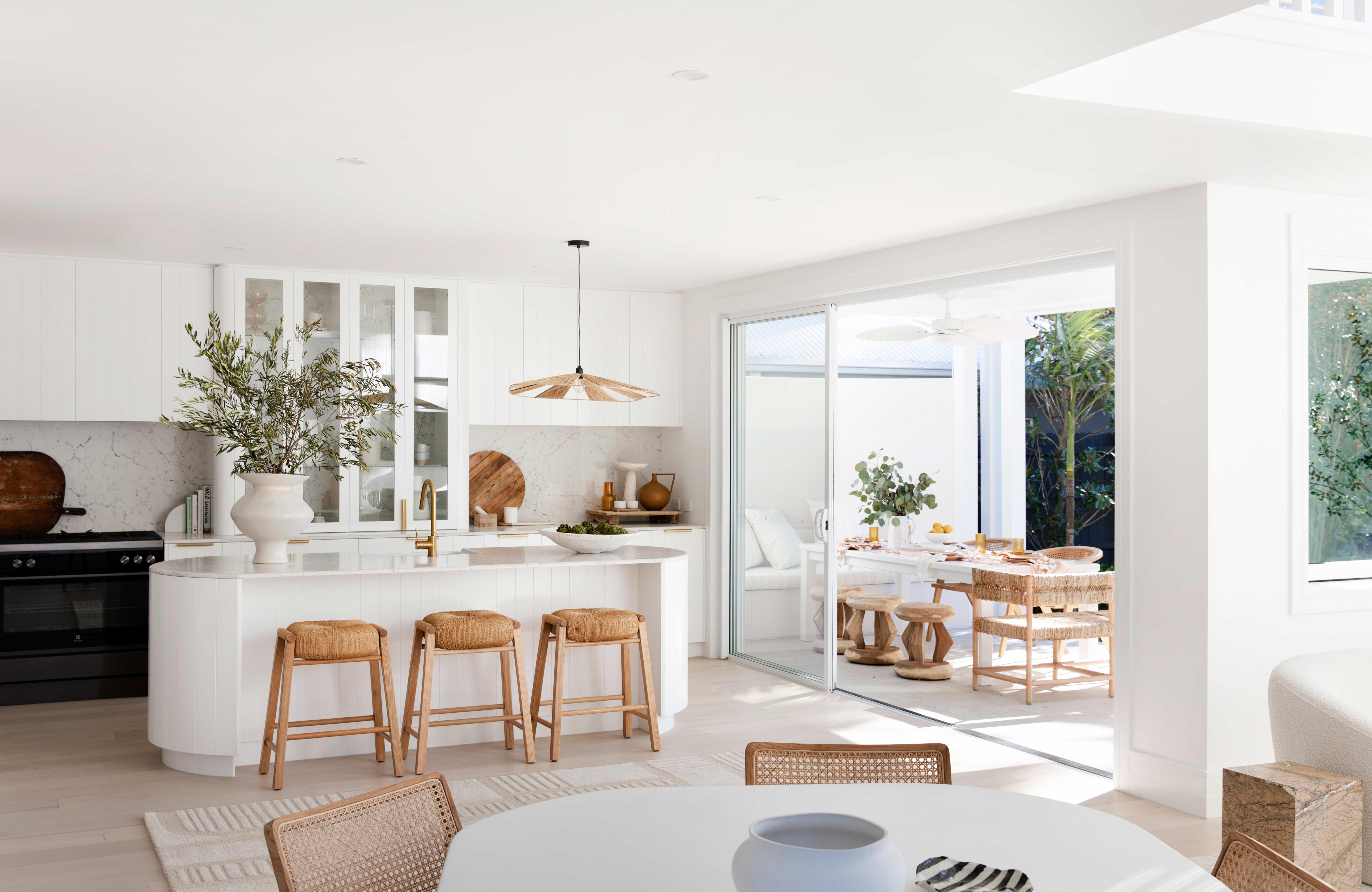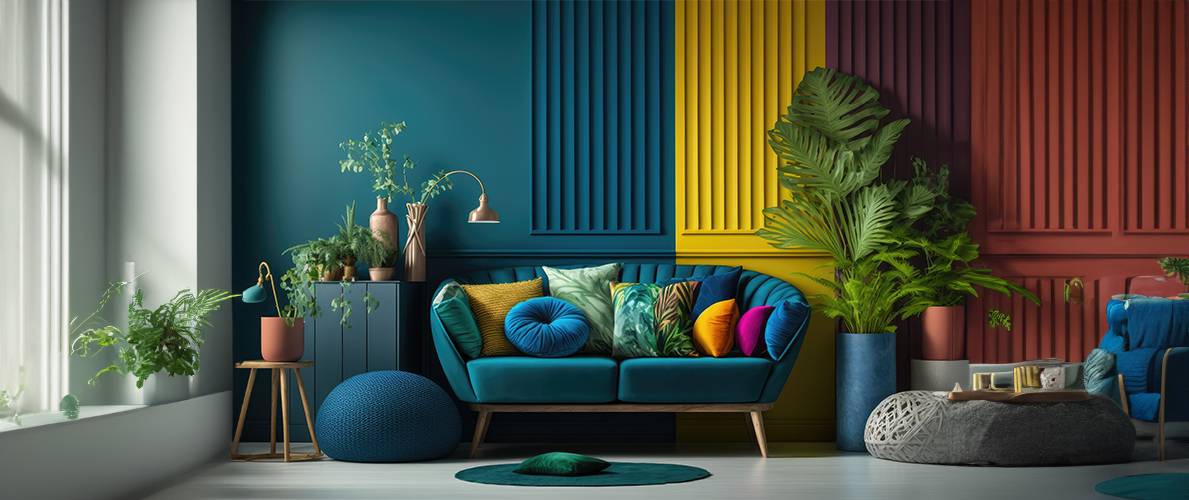A top-rated Architecture Firm can design your dream space.
A top-rated Architecture Firm can design your dream space.
Blog Article
Change Your Home With Crucial Concepts of Interior Decoration and Aesthetic Appeals
The art of transforming your home via the vital principles of indoor design and aesthetics calls for a thoughtful approach that balances shade, equilibrium, and spatial awareness. By understanding the influence of shade concept and the significance of structure and patterns, one can develop spaces that are not only visually enticing however also deeply personal. Achieving this balance entails greater than simple decor; it encompasses a critical arrangement and an eager understanding of exactly how each aspect connects within a space. As we discover these foundational principles, think about just how they may redefine your understanding of home and personal expression.
Recognizing Color Theory
Shade concept is a fundamental facet of indoor design that substantially affects state of mind, assumption, and overall visual. Comprehending the principles of shade concept permits designers to develop rooms that reverberate emotionally with residents while meeting functional demands (luxury interior design). Shades can be classified right into 3 main types: main, secondary, and tertiary. Each classification plays a crucial function in developing consistency within a room.
The mental influence of colors is profound; cozy tones such as reds and oranges stimulate energy and heat, while amazing tones like blues and greens promote peace and tranquility. The use of complementary colors improves visual passion, developing striking contrasts that can boost a room's appeal.
Neutral shades, on the various other hand, offer as a versatile backdrop, allowing other style elements to beam. It is necessary to consider elements such as lighting and the space's function when choosing a shade combination, as these can change the assumption of shades throughout the day.
Inevitably, a well-considered color design can transform an area, fostering a sense of convenience and style that lines up with the occupants' choices. Mastery of shade theory is, for that reason, an essential ability for any kind of indoor developer intending to create harmonious and inviting atmospheres.
Accomplishing Balance in Design
Exactly how can designers accomplish a sense of balance in their areas? Accomplishing equilibrium in layout is fundamental to producing harmonious interiors.
Unbalanced equilibrium, on the various other hand, relies upon differing elements that still accomplish a cohesive appearance. This approach permits for more vibrant and informal setups, providing passion while preserving balance. By carefully selecting differing dimensions, colors, and textures, developers can create an aesthetically compelling area that really feels balanced yet energetic.
Radial equilibrium stresses a central focal point with components radiating external. This style is typically seen in round layouts, where furniture and style produce a natural surround that draws the eye inward.
Inevitably, achieving balance calls for thoughtful consideration of scale, proportion, and the partnerships in between elements. interior design firms. By masterfully using these equilibrium concepts, designers can transform spaces right into atmospheres that feel both visually pleasing and functionally unified, boosting the total experience for occupants
Significance of Spatial Understanding

An eager sense of spatial awareness enables designers to recognize centerpieces within a space, assisting the customer's focus to key functions while keeping a total feeling of unity. It also aids in the calculated positioning of lights, which can substantially influence the perception of space and mood. Recognizing spatial connections allows the designer to provide to the details demands of citizens, making sure that each area serves its desired objective without endangering appearances.
Inevitably, spatial recognition is vital for maximizing the possibility of any type of interior area. By meticulously considering the interplay in between measurements, design, and function, developers can produce environments that not just satisfy useful needs yet likewise evoke a feeling of comfort and elegance, improving the overall living experience.
Including Structure and Patterns
Embracing a varied variety of appearances and patterns can substantially enhance the aesthetic and tactile allure of an interior room. The critical use numerous materials-- such as wood, metal, material, and stone-- develops depth and rate of interest, making a space really feel much more welcoming and dynamic. As an example, combining smooth surface areas with harsh structures can develop a balance that draws the eye and involves my sources the senses.
When incorporating patterns, think about both range and repeating. Huge patterns can work as centerpieces, while smaller sized, subtle layouts can complement other elements without overwhelming the room. Layering patterns, such as pairing floral paddings with striped throws, includes complexity and a sense of consistency if implemented thoughtfully.
It is likewise important to preserve a natural color combination, ensuring that structures and patterns interact as opposed to compete for attention. By selecting a couple of essential structures and patterns, you can produce a combined aesthetic that reflects your individual design while improving the general setting of the area. Inevitably, the careful incorporation Continue of these components can transform a mundane space right into an innovative atmosphere rich with personality and warmth.
Personalizing Your Room
Developing an area that reflects your individuality is crucial to accomplishing a genuinely welcoming environment. Customization in indoor style allows you to instill your special design and passions into your home, changing it from a plain shelter right into a refuge that talks to who you are. Begin by selecting a shade scheme that resonates with your emotions-- strong colors can stimulate, while soft tones provide peace.
Incorporate art work and design that mirror your enthusiasms, whether it be traveling, nature, or abstract principles. Displaying individual collections, such as publications, pictures, or souvenirs, can stimulate treasured memories and create prime focus within a room. Furthermore, think about tailoring functional items, like upholstered furniture, to straighten with your aesthetic preferences.

Conclusion
To conclude, the improvement of a home with the vital principles of interior decoration and aesthetics necessitates an extensive understanding of shade concept, balance, spatial recognition, appearance, and personalization. Each element contributes dramatically to creating a harmonious and useful living environment - miami luxury interior design. By attentively incorporating these concepts, people can boost the aesthetic charm and psychological vibration of their rooms, inevitably helpful site cultivating a home that mirrors unique identities while giving comfort and practicality
Report this page